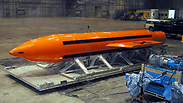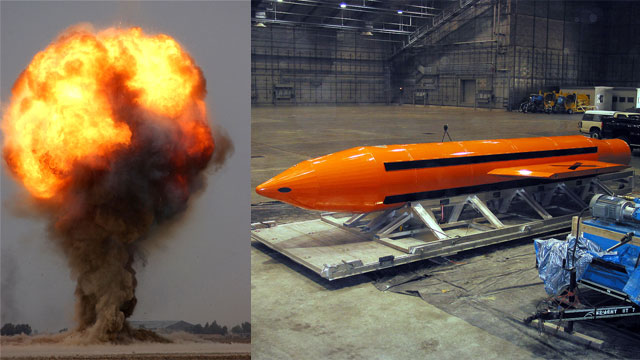

US drops largest non-nuclear bomb in Afghanistan
The Pentagon confirms that the US Army has bombed an ISIS target in Afghanistan with the GBU-43, known as the Mother of All Bombs; The weapon is a thermobaric bomb, which utilizes oxygen from the surrounding air to produce an extremely powerful pressure wave and tremendous heat.
According to Adam Stump, a Pentagon spokesman, it was the first-ever combat use of the bomb, known as the GBU-43, which he said contains 11 tons of explosives.
The US Air Force calls it the Massive Ordnance Air Blast bomb. Based on the acronym, it has been nicknamed the "Mother Of All Bombs."
Stump said the bomb was dropped on a cave complex believed to be used by ISIS fighters in the Achin district of Nangarhar province, very close to the border with Pakistan.
The weapon is a thermobaric bomb, which utilizes oxygen from the surrounding air to produce an extremely powerful pressure wave and tremendous heat.
As opposed to conventional, high-explosive munitions, which propel shrapnel in a quick, pointed manner, thermobaric weapons produce an explosion and pressure wave that is capable of traveling longer distances.
When used in a confined space such as a cave in this case, the effects of a thermobaric weapon like the GBU-43 are amplified as a result of being channeled and focused.
Gen. John W. Nicholson, commander of US forces in Afghanistan, said in a written statement that the strike was designed to minimize the risk to Afghan and US forces conducting clearing operations in the Achin area "while maximizing the destruction" of ISIS fighters and facilities.
Nicholson said ISIS has been using improvised explosive devices, bunkers and tunnels to strengthen its defenses.
"This is the right munition to reduce these obstacles and maintain the momentum of our offensive against ISIS-K," Nicholson said in a statement.
It was not immediately clear how much damage the bomb did.
(Fred Goldberg contributed to this article)


















